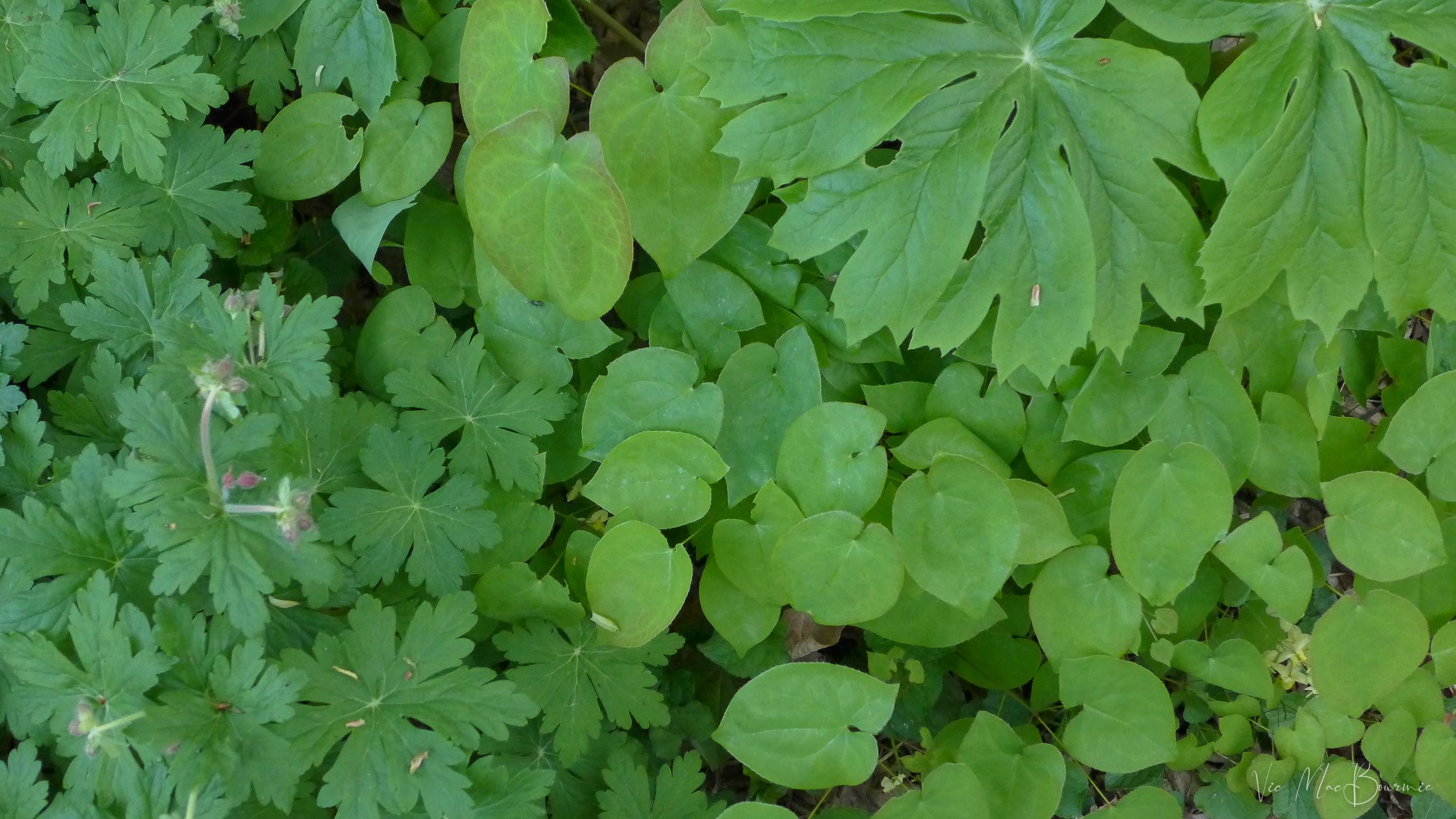Create a tapestry of ground covers
In any garden, but especially a woodland or shade garden, ground covers need to be a vital part of the design plan.
Without them, the forest floor either looks too bare or it begins to form its own ground cover based on whatever weeds are dominant in the area. A thick ground cover not only shades and protects the soil of the garden floor, it creates a beautiful green backdrop for other, more showy plants, to shine.
Make ground covers the star of the show
But what if the ground covers themselves were the real show in the garden?
By creating a tapestry of ground covers, all competing for their own space on the forest floor, it’s possible to turn them into the star of a particular part of the garden.
Think of the wall tapestries made up of mosses and ferns that have become so popular in the last few years, and translate that same look on to your garden’s floor.
The results can be stunning.
In fact, in one area of our garden where I have been adding ground covers (three great ground covers) for the past several years to cover up a messy sloped area between our home and the neighbours,’ the result is truly inspirational this spring.
By combining hosta, ferns, sweet woodruff, wild geranium, pachysandra along with a little Lilly of the Valley (I know it can be a problem) the area has been transformed from an eye sore to a lovely tapestry where the ground covers fight it out for dominance.
A little gentle persuasion on my part can hopefully keep everything in check and allow the tapestry to continue for several years before the more dominant ground covers can get a foothold in the space.
Growing up through the ground covers is a lovely Cornus Alternifolia (Pagoda Dogwood) that lends its elegant shape to the garden area.
Nearby, a ground cover of mayapple, wild geranium and epimedium are weaving their own tapestry under the canopy of our mature Linden tree.
Ground covers are most often either an overlooked component to a landscape, or used singularly in a mass planting. While a mass planting of a single ground cover such as pachysandra can create a unified landscape and is almost certainly better than the most used ground cover of all – turf grass – adding a second or third ground cover, preferably ones that are native, can add real texture and diversity to your landscape.
Why not consider setting up an area of your garden where ground covers take centre stage and add real texture to your garden floor in the way of a beautiful ground cover tapestry.
This fawn was spotted hiding in the deep ground cover of ferns, hosta etc.
Update on our ground cover tapestry
Shortly after writing this post, we woke up to a beautiful little fawn hiding in our thick ground cover. Mom either gave birth to the fawn nearby because we picked her up alone on a trail cam the night before, or she brought the fawn to the location just for the day because it was gone by the late afternoon.
I guess the old saying: “build it and they will come” can be changed to “grow it and they will appear.”
Author Profile: Vic MacBournie is a former journalist and author/owner of the award-winning website and newsletter Ferns & Feathers. He writes about his woodland wildlife garden that he has created over the past 25 years and enjoys sharing his garden photography with readers.





